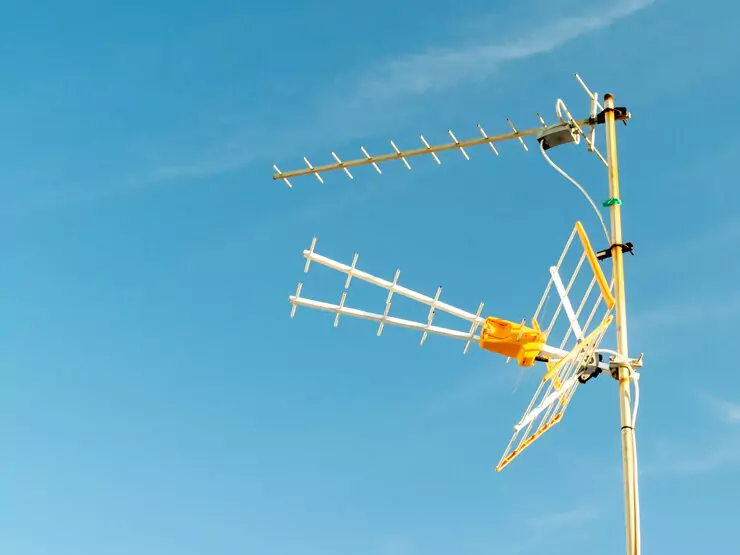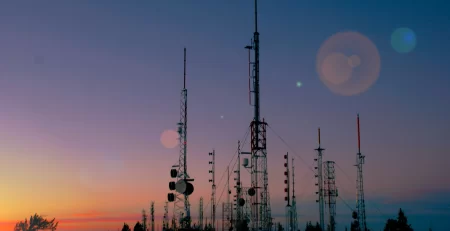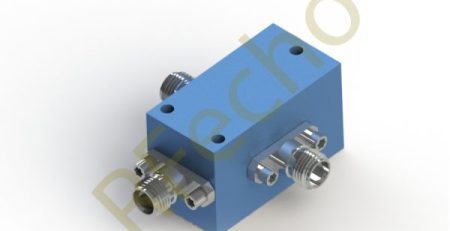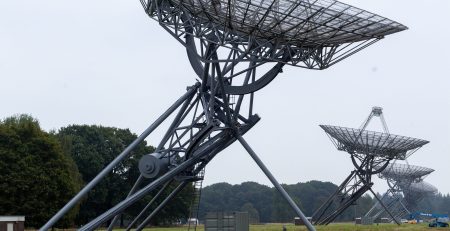Which Radio Antenna Boosts FM Signal for Clear Reception
 Understanding the Basics of Radio Antennas
Understanding the Basics of Radio Antennas
What is a Radio Antenna?
A radio antenna is a device used to transmit and receive electromagnetic signals, facilitating communication in various forms. Antennas convert electrical power into radio waves and vice versa, enabling communication between devices such as radios, televisions, and mobile phones. They come in different shapes and sizes, tailored to specific applications and frequency bands.
How Do Radio Antennas Work?
Radio antennas operate on the principle of electromagnetic induction. When an alternating current (AC) passes through the antenna, it generates electromagnetic waves that radiate outward. Conversely, when these waves encounter an antenna, they induce an alternating current. This exchange enables the reception and transmission of signals. The efficiency of this process is influenced by factors such as antenna design, placement, and external interference.
Types of FM Radio Antennas
Indoor FM Radio Antennas
Indoor FM radio antennas are designed for use within buildings. They are usually compact and convenient for users who prefer a simple setup.
Different Types of Indoor Antennas
Indoor antennas come in several varieties, including dipole antennas, T-shaped wire antennas, and loop antennas. Dipole antennas typically consist of two conductive elements and can be mounted on walls. T-shaped wire antennas are similar but are more flexible in placement. Loop antennas consist of a loop of wire that can be placed on shelves or tables.
Pros and Cons of Indoor Antennas
Indoor antennas are easy to install and require minimal setup, making them ideal for urban environments where outdoor installation may be impractical. However, they may struggle with signal reception in areas with thick walls or high levels of interference. Although compact, their range is generally limited compared to outdoor antennas.
Outdoor FM Radio Antennas
Outdoor FM radio antennas are designed for installation outside buildings. They typically offer better reception and range due to their elevated placement.
Different Types of Outdoor Antennas
Outdoor antennas include Yagi-Uda antennas, which have multiple elements for enhanced directionality, and whip antennas, which are simple and flexible. Another type is the log-periodic antenna, known for its broad frequency range. These antennas are usually mounted on rooftops or tall poles to maximize their signal reception capability.
Advantages and Disadvantages of Outdoor Antennas
The major advantage of outdoor antennas is their superior reception quality. Elevated placement allows them to avoid obstacles and interference, providing clearer and stronger signals. However, they require professional installation and are more susceptible to weather conditions. Additionally, outdoor antennas involve higher upfront costs and maintenance.
RFecho
When it comes to enhancing FM signal reception, choosing the right radio antenna is crucial. Among the various options available, the Standard Gain Horn Antenna with Curve Edge from RFecho stands out for its precision and reliability. Manufactured using precision CNC integrated sections, this antenna ensures accurate, consistent, and reliable performance, with a deformation rate of less than 0.01 under limiting conditions. Covering a wide frequency range from 2.5GHz to 40GHz, and offering a nominal gain of 15dBi, this antenna is suitable for standard field strength measurement and generation. The connection methods include SMA, 2.92mm, and N-type, making it versatile for different applications.
RFecho is a leader in high-performance antenna design and development, offering solutions from low frequencies up to THz frequencies. Their expertise spans standard gain horns, reflector antennas, CATR feeds, antenna arrays, and more. With a strong focus on innovation, RFecho has collaborated with prestigious institutions like Cambridge University, Oxford University, Harvard University, and leading tech companies such as Facebook and Google. Their product range includes both passive and active components, such as filters, power dividers, couplers, low noise amplifiers, and phase shifters, catering to fields like remote control, telemetry, electronic countermeasures, and satellite positioning.
RFecho’s Dual Polarized Horn Antennas, for instance, offer high gain and symmetric beam characteristics, making them ideal for radar cross-section antenna arrays and satellite reflector antenna feeds. These antennas support frequencies from 1GHz to 44GHz with a nominal gain of 8-20dBi, ensuring robust performance across various applications.
Comparing Various FM Radio Antenna Options
Dipole Antennas vs. Loop Antennas
Characteristics and Features of Dipole Antennas
Dipole antennas are among the simplest and most commonly used types of FM radio antennas. They consist of two conductive elements arranged in a straight line, usually made of wire or metal rods. These antennas are often inexpensive and easy to install, requiring minimal tools and expertise. Dipole antennas provide better reception for FM signals by focusing the signal in a specific direction, which can be adjusted by altering the position of the antenna elements. However, they may be less effective in multipath environments, where received signals arrive from different directions and cause interference.
Characteristics and Features of Loop Antennas
Loop antennas, on the other hand, consist of a loop (or multiple loops) of wire or other conductive material. They can be compact and easily placed within indoor settings, making them ideal for small spaces. Loop antennas are known for their ability to reject noise and interference, which is beneficial in urban environments with lots of electronic devices. They can also be oriented to pick up signals from multiple directions. However, loop antennas usually provide lower gain compared to dipole antennas and might require more precise positioning to achieve the best reception.
Yagi-Uda Antennas vs. Whip Antennas
Key Aspects of Yagi-Uda Antennas
Yagi-Uda antennas are directional antennas that can greatly enhance FM signal reception in challenging environments. They consist of multiple elements arranged in parallel along a common axis – typically a driven element, a reflector, and several directors. This design allows Yagi-Uda antennas to focus on a specific direction, making them ideal for rural or suburban areas where the desired stations are far away. The high gain provided by these antennas makes them efficient but requires precise alignment towards the signal source. Professional installation is usually recommended to ensure optimal performance.
Important Points about Whip Antennas
Whip antennas are relatively simple and versatile. They consist of a single, flexible rod or wire and can be mounted on cars, boats, and even buildings. These antennas are omnidirectional, meaning they can receive signals from all directions without the need for alignment. This makes them convenient but potentially less powerful than Yagi-Uda antennas when it comes to focusing on distant or weak signals. Nonetheless, whip antennas are easy to install and are a cost-effective solution for improving FM reception in various environments.
Factors to Consider in Choosing an FM Radio Antenna
Signal Strength and Reception Quality
When selecting an FM radio antenna, signal strength and reception quality are primary considerations. Higher gain antennas, such as Yagi-Uda, are beneficial in areas with weak signals or long distances from the transmission source. Conversely, for locations with strong signals, a simple dipole or loop antenna might suffice. Evaluating your specific geographic and environmental factors can help determine the best fit.
Installation and Setup Requirements
Installation and setup are critical factors in choosing an FM radio antenna. Indoor antennas, such as the loop or dipole types, generally offer a straightforward, user-friendly installation process. Outdoor antennas, like Yagi-Uda or log-periodic types, often require more complex setup, including mounting hardware and alignment. Professional installation might be necessary to ensure optimal performance and longevity, especially for elevated or roof-mounted antennas.
Cost and Affordability
Cost and affordability are essential to consider when selecting an FM radio antenna. Indoor antennas are typically more affordable due to their simple design and ease of installation. Outdoor antennas, while potentially offering superior performance, come with higher costs due to materials, installation requirements, and maintenance. Evaluating your budget and balancing it with the desired reception quality will guide you to the most cost-effective solution.
Practical Tips for Enhancing FM Radio Reception
Positioning Your FM Radio Antenna for Optimal Reception
Proper positioning of your FM radio antenna is crucial for optimal reception. For indoor antennas, placing them near windows and away from electronic devices can minimize interference. Elevating the antenna and experimenting with different orientations can also enhance signal strength. Outdoor antennas should be mounted as high as possible and aimed towards the broadcasting station. Avoiding obstructions such as buildings and trees will further improve reception.
Adjustments and Troubleshooting Common Issues
Even with the right antenna, adjustments and troubleshooting may be necessary to achieve the best results. One common issue is multipath interference, where signals bounce off objects and arrive at different times. Adjusting the antenna’s position or orientation can help mitigate this. Regularly checking connections and ensuring that all components are securely in place can prevent signal loss. In case of persistent issues, consulting a professional or upgrading to a more advanced antenna model might be required.


 Understanding the Basics of Radio Antennas
Understanding the Basics of Radio Antennas





